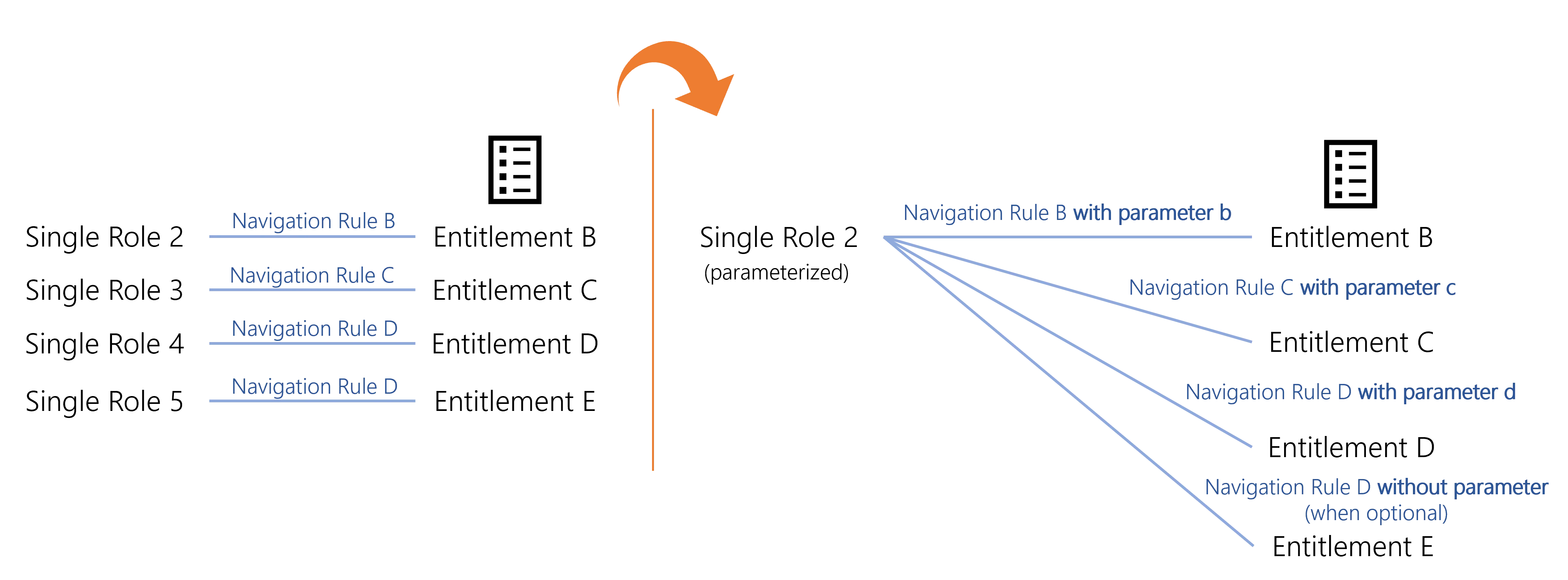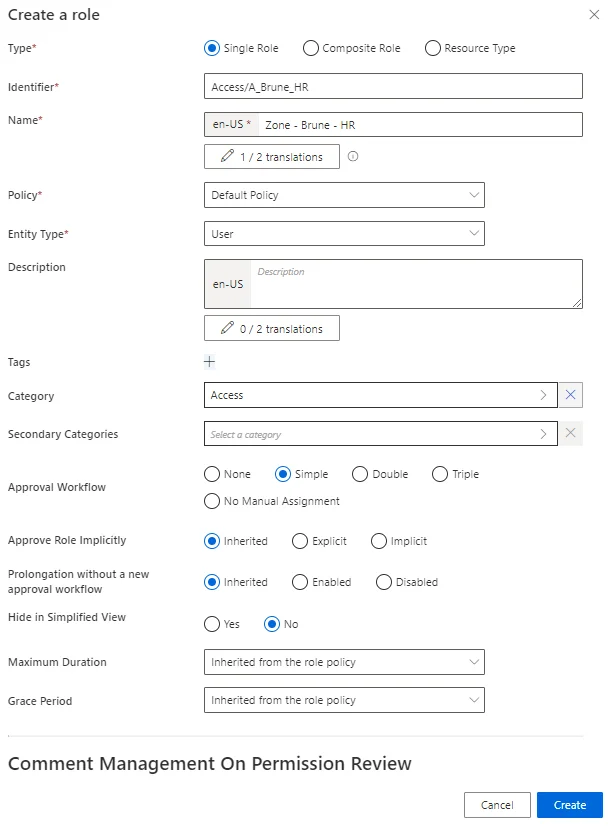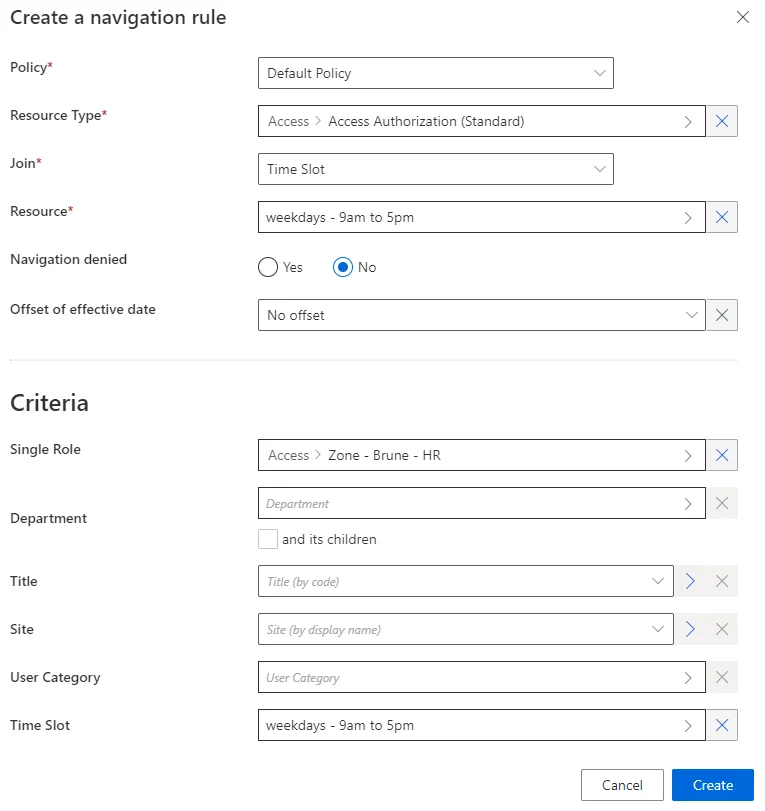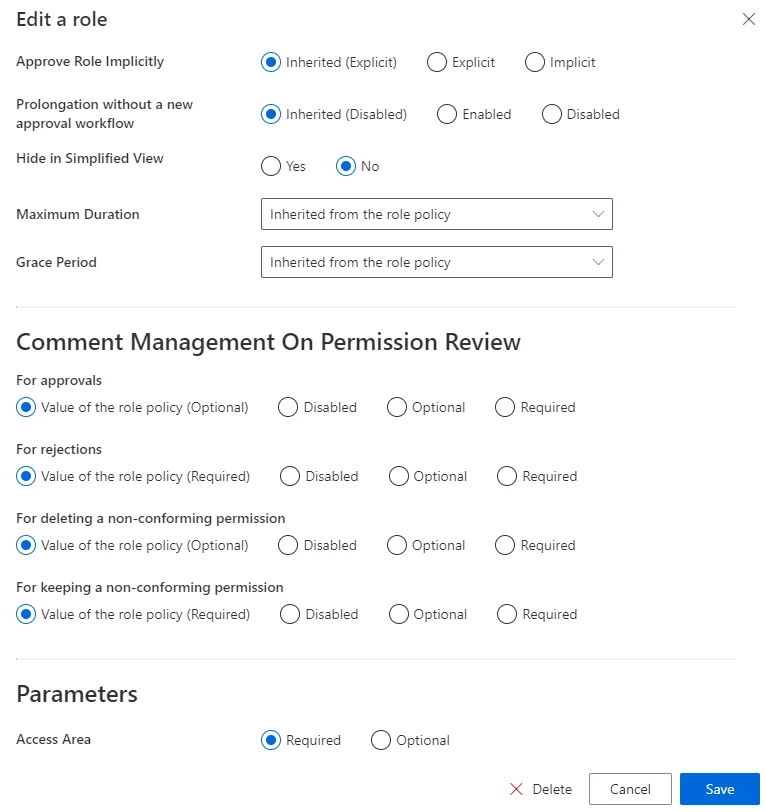Configure a Parameterized Role
How to reduce the number of roles in the model by configuring roles with parameters.
Overview
The assignment of a role to a user gives them an entitlement, usually a group membership, thanks to a navigation rule. See more details on roles and navigation rules.
To enable the assignment of all existing entitlements, the role model usually contains numerous roles.
For example, the SAP role can be given with slight differences according to the users' subsidiaries:
In order to reduce the number of roles, we can configure roles with parameters by inserting a criterion in the navigation rules. Thus, instead of having as many roles as entitlements (left on the schema), we can have way fewer roles (right on the schema).

In the previous example, with a parameter on the subsidiary, the number of roles would be divided by three.
By extension, a composite role that assigns a parameterized single role is parameterized too.
This way, when assigning a parameterized role, a popup window is displayed where the parameter must be specified.
The same thing goes with type rules instead of navigation rules when we want to assign resource types instead of entitlements.
Configure a Parameterized Role
Configure a parameterized role by proceeding as follows:
-
Create in XML a dimension corresponding to the parameter that will affect the role.
For example, let's consider that we have many roles available on three different time slots: 8 hours a day, 12 hours a day, or 24 hours a day. We create a dimension for these time slots.
<Dimension Identifier="TimeSlot" DisplayName_L1="Time Slot" EntityType="Access_TimeSlot" ColumnMapping="10" IsExcludedFromRoleMining="true" /> -
In the UI, create a single role.
For example:

-
Create one navigation rule linked to the role for each available value of the parameter.
Here we have three navigation rules, one for each distinct time slot (dimension A). For example:

Make sure that the corresponding dimension is specified in the right
DisplayEntityTypein XML to be displayed in the UI. -
Go back to the roles page to edit the single role from step 2, if needing to set the parameter required.
For example:

-
If you want Usercube to provide suggestions to set the parameter's value, then make sure that users' context rule specifies the dimension.
For example, with the
Titledimension:
<ContextRule Identifier="Directory_User" DisplayName_L1="Directory_User" B0="Directory_UserRecord:Organization" B1="Directory_UserRecord:Title" B2="Directory_UserRecord:Site" B3="Directory_UserRecord:Site.Region.Country" B4="Directory_UserRecord:UserType.Category" ... Policy="Default" SourceEntityType="Directory_User" />
Verify the Parameterized Role
In order to verify the process, request manually the parameterized role for a test user. Some additional pop-ups are displayed to set a value for the role's parameter.
In our example:
If the dimension is specified in the users' context rule, then Usercube will provide suggestions.
For example, concerning the
Titledimension mentioned above:
